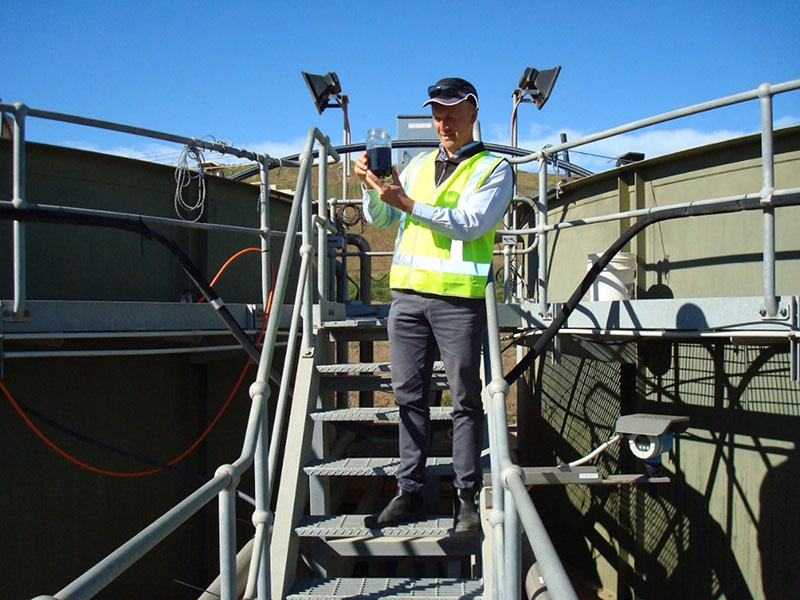
About the project
Property and Development NSW’s (PDNSW’s) Waste Assets Management Corporation (WAMC) manages and treats up to 130 million litres of wastewater a year, the equivalent volume to about 50 Olympic-sized swimming pools, across various closed landfill sites.
Each site has a dedicated wastewater treatment plant to treat the raw wastewater from the landfill before it is discharged into the sewer system.
These engineered “cells” collect, contain and treat wastewater. The cells are lined, either with clay or a synthetic product, to prevent leachate entering groundwater, soil, creeks and rivers.
Wastewater levels within the landfill are managed to enhance biogas production and to comply with NSW Environment Protection Authority (EPA) site licence requirements, while also reducing greenhouse gas emissions.
Wastewater treatment systems are installed at the following sites:
- Eastern Creek closed landfill
- Thornleigh and Merrylands closed landfills
- Pasminco closed landfill
- Belrose (Bare Creek) closed landfill
- St Peters Interchange, Westconnex (managed on behalf of Transport for NSW).
Background
WAMC is responsible for the ongoing management of nine closed landfill sites across NSW, focusing on landfill rehabilitation to minimise potential health and environmental risks.
Activities across the sites include monitoring, management and maintenance of:
- leachate extraction systems and leachate treatment and disposal facilities
- landfill gas capture and power generation or flaring systems
- EPA-regulated maintenance and monitoring of the landfill assets, including gas
- leachate and groundwater monitoring and security systems
- ongoing maintenance and operation of the assets, plant and equipment.
Wastewater is generated when liquid from rainfall, groundwater or the biological breakdown of waste itself, passes through waste material and becomes contaminated.
The wastewater is contaminated with organics, ammonia, heavy metals and suspended solids that require treatment before being released into the environment.
The wastewater is collected by a series of plastic pipes and transferred by pump to holding dams for storage prior to treatment and disposal. An aerobic treatment process uses microbes and oxygen to degrade the contaminants prior to discharge into the sewer system.
Next steps
WAMC will continue to operate the wastewater treatment systems to ensure liquid levels within the landfill cells remain low and comply with EPA licence requirements. These systems are likely to be operated and maintained for the next 20 to 30 years.
Frequently asked questions
What is the benefit of managing the wastewater onsite?
Onsite management reduces costs to WAMC and reduces the reliance on offsite treatment systems. It allows WAMC to effectively control the wastewater volumes across various landfill sites to comply with EPA environment protection licence requirements.
WAMC uses solar energy generated from the roof of the wastewater treatment plant to reduce its reliance on the electricity network and to minimise its carbon footprint.
How long does the wastewater need to be managed across the WAMC sites?
The wastewater is typically managed for 30 to 40 years after each landfill is closed to ensure that there are no impacts on the environment.
What is the volume of ammonia treated by WAMC each year?
WAMC manages and treats approximately 100,000 kg of ammonia per annum.
High ammonia levels in natural water systems (rivers, creeks) may harm aquatic life and can be toxic to freshwater organisms.
Who are the key stakeholders in the project?
Our stakeholders include the EPA, Sydney Water, other waste management service providers (Cleanaway, Veolia, GRL) and the community.
WAMC also receives and treats wastewater from external sources.
Get in touch
For more information, email WAMC-admin@dpie.nsw.gov.au or call 1300 109 655.